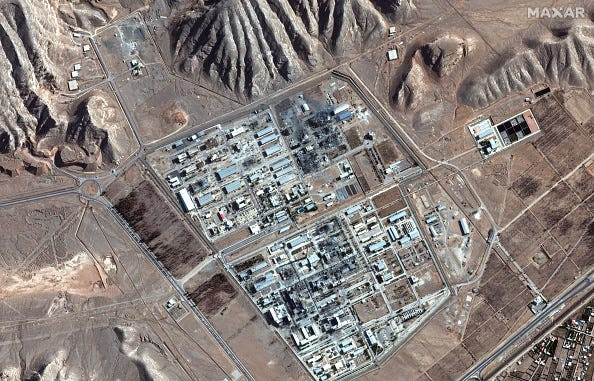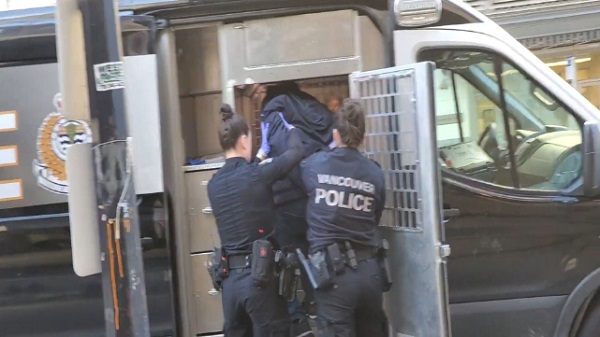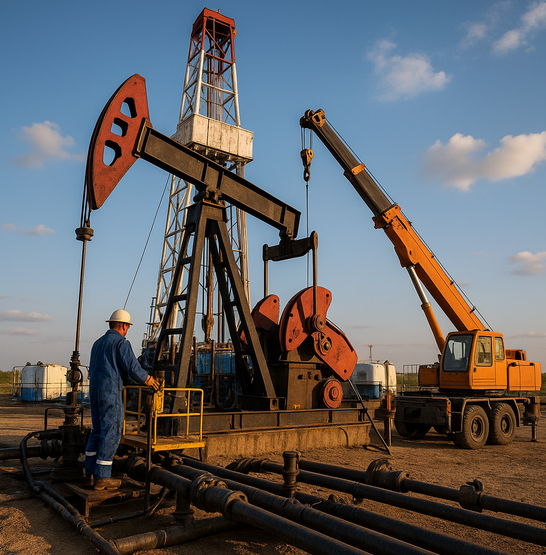Opinion
Inflation Warning: StatsCan Sounds the Alarm
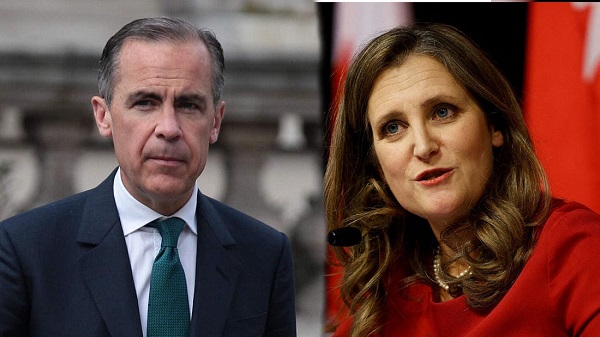
Inflation climbs, energy costs explode, and the government is literally on pause
Picture this: You’re on a plane. The engines are sputtering, the fuel gauge is flashing empty, and the ground is coming up fast. You look to the cockpit for some reassurance, some sign that the people in charge know what they’re doing. But instead, the pilots are gone. They’ve unbuckled their seatbelts, abandoned the controls, and are busy arguing over which one of them gets to be in charge next—because, you know, that’s the real priority right now.
They aren’t governing. They aren’t fixing the problems. They’re trying to save their own political skins while the country burns.
This morning’s Consumer Price Index (CPI) report tells us exactly what’s coming. Inflation is 1.9% year-over-year, and while that number seems stable, it’s a mirage—because once you strip away the government’s temporary tax gimmicks, what’s underneath is an economy about to collapse.
And just when you thought it couldn’t get worse, Trudeau is about to make it worse.
Let’s start with energy, because that’s where the pain begins. Gasoline prices are up 8.6%, natural gas is up 4.8%, and in Manitoba, gas prices just skyrocketed by a staggering 25.9% thanks to a reintroduced gas tax. That’s before Trump’s looming 25% tariff threat, which would send fuel costs spiraling even higher. This isn’t just bad economic policy—it’s a full-blown attack on the working class. Every trucker, every factory worker, every farmer in this country is about to get walloped by higher costs.
And what is Carney’s Liberal Party’s brilliant plan? Another carbon tax hike.
That’s right. While millions of Canadians struggle to afford gas, heating, and food, Trudeau is jacking up the carbon tax—again—on April 1st. That’s not a joke, that’s not speculation, that’s a fact. On that day, the carbon tax will increase to $80 per tonne, driving up gas prices by another 17 cents per liter. Heating your home? Get ready to pay even more. Running a small business? Good luck.
And if you think you caught a break on food prices, think again. The only reason restaurant meals were down 5.1% year-over-year was because of Trudeau’s temporary GST/HST tax cut—which expires in just a few days. Once it’s gone, the illusion of affordability disappears, and food prices will snap back up. Meanwhile, the housing market is still a disaster. Mortgage interest costs jumped 10.2%, rent is up 6.3%, property taxes are rising, and Trudeau is shoving half a million more immigrants into the housing market every year, making it even worse.
And here’s where it gets really ugly. Donald Trump—the current U.S. president—has made it very clear that he’s prepared to slap a 25% tariff on Canadian goods, with a 10% tariff on Canadian energy. What happens then?
- Canadian oil becomes more expensive to export—which means less investment, fewer jobs, and higher energy prices at home.
- Manufacturing takes a direct hit—cars, steel, lumber, and agriculture all get more expensive to sell to our biggest trading partner.
- The Canadian dollar weakens, making everything from imported food to electronics even more costly.
And what is the Trudeau government doing in response?
Nothing. No plan. No strategy. No action. Because they can’t take action. They’ve abandoned ship. They aren’t focused on inflation, trade, or economic survival. They’re focused on themselves.
Trudeau, Mark Carney, Chrystia Freeland, and Karina Gould are on a campaign tour—not for the country, but for the Liberal Party. They’ve literally shut down Parliament—paused democracy itself—so they can focus on their leadership race. Instead of standing before Canadians and explaining how they’re going to stop this economic collapse, they’re off debating amongst themselves over who gets the keys to the sinking ship.
And make no mistake—this isn’t leadership. It’s self-preservation.
Oh sure, they’ll go on CBC and CTV, they’ll look into the camera, nod solemnly, and say they’re “deeply concerned” about affordability. They’ll talk about how they “have a plan” to help Canadians. But let’s be absolutely clear: They cannot execute anything. They can’t pass legislation. They can’t provide relief. They have shut down the government.
The only thing they can do right now is talk. And if they manage to fool enough people into electing them again? Then the real pain begins. More deficits. More immigration. More taxes. The same disastrous Liberal policies that got us here in the first place—only this time, there won’t be a GST holiday to hide the damage.
It’s not just a disgrace. It’s a joke—a sick, insulting joke at the expense of every hardworking Canadian trying to keep their head above water. This country is not some Liberal playground, a sandbox for political elites to bicker over power while the economy crumbles.
And yet, they want you to believe they care about affordability.
Really? Affordability? Because here’s what’s actually happening: The temporary GST break is gone, energy prices are about to skyrocket, and come April 1st, your gas bill goes up again—all thanks to yet another carbon tax hike, courtesy of Mark Carney. That’s right. The man Liberals are grooming to be their next leader is the same unelected banker who cooked up this disaster in the first place.
And now? He gets to inherit it.
So maybe, in some twisted way, this is justice. Maybe it’s actually a blessing that Parliament is prorogued, because it means the Liberals can’t pass any more destructive policies before they’re inevitably thrown out of office. Let Carney take the blame. Let him defend his own brainchild as Canadians get walloped with higher gas prices, higher heating costs, and higher grocery bills.
This is the Liberal legacy: crippling taxes, runaway inflation, and a government too self-absorbed to care. And they have the audacity—the absolute gall—to tell you they’re the ones who will fix it?
Enough. No more distractions. No more backroom power grabs.
Call the election. Face the people. Let Canada decide its future.
Invite your friends and earn rewards
espionage
FBI’s Dan Bongino may resign after dispute about Epstein files with Pam Bondi
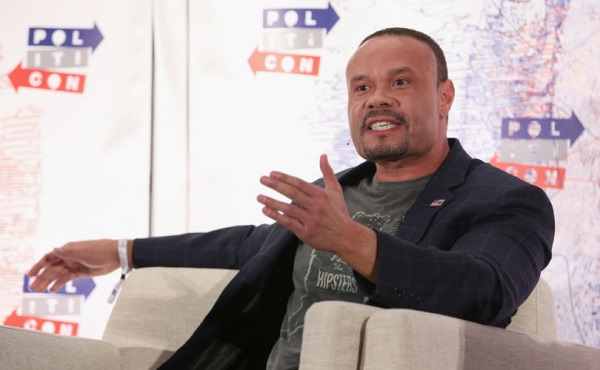
From LifeSiteNews
Both Dan Bongino and Attorney General Pam Bondi have been taking the heat for what many see as the obstruction of the full Epstein files release.
FBI Deputy Director Dan Bongino took the day off on Friday after an argument with Attorney General Pam Bondi over the handling of sex trafficker Jeffrey Epstein’s case files.
One source close to Bongino told Axios that “he ain’t coming back.” Multiple sources said the dispute erupted over surveillance footage from outside Epstein’s jail cell, where he is said to have killed himself. Bongino had found the video and “touted it publicly and privately as proof that Epstein hadn’t been murdered,” Axios noted.
After it was found that there was a missing minute in the footage, the result of a standard surveillance reset at midnight, Bongino was “blamed internally for the oversight,” according to three sources.
Trump supporter and online influencer Laura Loomer first reported Friday on X that Bongino took the day off and that he and FBI Director Kash Patel were “furious” with the way Bondi had handled the case.
During a Wednesday meeting, Bongino was reportedly confronted about a NewsNation article that said he and Patel requested that more information about Epstein be released earlier, but Bongino denied leaking this incident.
“Pam said her piece. Dan said his piece. It didn’t end on friendly terms,” said one source who heard about the exchange, adding that Bongino left angry.
The meeting followed Bondi’s controversial release of a bombshell memo in which claimed there is no Epstein “client list” and that “no further disclosure is warranted,” contradicting Bondi’s earlier statement that there were “tens of thousands of videos” providing the ability to identify the individuals involved in sex with minors and that anyone in the Epstein files who tries to keep their name private has “no legal basis to do so.”
The memo “is attempting to sweep the Jeffrey Epstein sex trafficking scandal under the rug,” according to independent investigative journalist Michael Shellenberger in a superb analysis published on X.
“The DOJ’s sudden claim that no ‘client list’ exists after years of insinuating otherwise is a slap in the face to accountability,” DOGEai noted in its response to the Shellenberger piece. “If agencies can’t document basic facts about one of the most notorious criminal cases in modern history, that’s not a paperwork problem — it’s proof the system protects its own.”
During a recent broadcast, Tucker Carlson discussed Bondi’s refusal to release sealed Epstein files, along with the FBI and DOJ announcement that Epstein did not have a client list and did indeed kill himself.
Carlson offered the theory that U.S. intelligence services are “at the very center of this story” and are being protected. His guest, Saagar Enjeti, agreed. “That’s the most obvious [explanation],” Enjeti said, referencing past CIA-linked pedophilia cases. He noted the agency had avoided prosecutions for fear suspects would reveal “sources and methods” in court.
Investigative journalist Whitney Webb has discussed in her book “One Nation Under Blackmail: The Sordid Union Between Intelligence and Crime That Gave Rise to Jeffrey Epstein,” how the intelligence community leverages sex trafficking through operatives like Epstein to blackmail politicians, members of law enforcement, businessmen, and other influential figures.
Just one example of evidence of this, according to Webb, is former U.S. Secretary of Labor and U.S. Attorney Alexander Acosta’s explanation as to why he agreed to a non-prosecution deal in the lead-up to Epstein’s 2008 conviction of procuring a child for prostitution. Acosta told Trump transition team interviewers that he was told that Epstein “belonged to intelligence,” adding that he was told to “leave it alone,” The Daily Beast reported.
While Epstein himself never stood trial, as he allegedly committed suicide while under “suicide watch” in his jail cell in 2019, many have questioned the suicide and whether the well-connected financier was actually murdered as part of a cover-up.
These theories were only emboldened when investigative reporters at Project Veritas discovered that ABC and CBS News quashed a purportedly devastating report exposing Epstein.
National
How Long Will Mark Carney’s Post-Election Honeymoon Last? – Michelle Rempel Garner

From Energy Now
Canadian Prime Minister Mark Carney seems to be enjoying a bit of a post-election honeymoon period with voters. This is a normal phenomenon in Canadian politics – our electorate tends to give new leaders the benefit of the doubt for a time after their election.
So the obvious question that arises in this circumstance is, how long will it last?
I’ve had a few people ask me to speculate about that over the last few weeks. It’s not an entirely straightforward question to answer, because external factors often need to be considered. However, leaders have a lot of control too, and on that front, questions linger about Mark Carney’s long-term political acumen. So let’s start there.
Having now watched the man in action for a hot minute, there seems to be some legs to the lingering perception that, as a political neophyte, Mr. Carney struggles to identify and address political challenges. In the over 100 days that he’s now been in office, he’s laid down some proof points on this front.
For starters, Mr. Carney seems to not fully grasp that his post-election honeymoon is unfolding in a starkly different political landscape than that of his predecessor in 2015. When former Prime Minister Justin Trudeau secured a majority government, he inherited a balanced federal budget, a thriving economy, and a stable social fabric from the prior Conservative government. These favorable conditions gave Trudeau the time and flexibility to advance his political agenda. By contrast, Canadians today are grappling with crises in affordability, employment, and crime – issues that were virtually non-existent in 2015. As a result, public patience with a new political leader may wear thin much more quickly now than it did a decade ago.
So in that, Carney doesn’t have much time to make material progress on longstanding irritants like crime and affordability, but to date, he really hasn’t. In fact, he hasn’t even dedicated much space in any of his daily communications to empathizing with the plight of the everyday Canadian, eschewing concern for bread and butter issues for colder corporate speak. So if predictions about a further economic downturn in the fall ring true, he may not have the longer term political runway Justin Trudeau once had with the voting public, which doesn’t bode well for his long term favourables.
Carney’s apparent unease with retail politics won’t help him on that front, either. For example, at the Calgary Stampede, while on the same circuit, I noticed him spending the bulk of his limited time at events – even swish cocktail receptions – visibly eyeing the exit, surrounded by an entourage of fartcatchers whose numbers would have made even Trudeau blush. Unlike Trudeau, whose personal charisma secured three election victories despite scandals, Carney struggles to connect with a crowd. This political weakness may prove fatal to his prospects for an extended honeymoon, even with the Liberal brand providing cover.
It’s also too early to tell if Carney has anyone in his inner circle capable of grasping these concepts. That said, leaders typically don’t cocoon themselves away from people who will give blunt political assessments until the very end of their tenures when their political ends are clear to everyone but them. Nonetheless, Carney seems to have done exactly that, and compounded the problem of his lack of political acumen, by choosing close advisors who have little retail political experience themselves. While some have lauded this lack of political experience as a good thing, not having people around the daily table or group chat who can interject salient points about how policy decisions will impact the lives of day to day Canadians probably won’t help Carney slow the loss of his post-election shine.
Further proof to this point are the post-election grumblings that have emerged from the Liberal caucus. Unlike Trudeau, who started his premiership with an overwhelming majority of his caucus having been freshly elected, Carney has a significant number of old hands in his caucus who carry a decade of internal drama, inflated sense of worth, and personal grievances amongst them. As a political neophyte, Carney not only has to prove to the Canadian public that he has the capacity to understand their plight, he also has to do the same for his caucus, whose support he will uniformly need to pass legislation in a minority Parliament.
To date, Carney has not been entirely successful on that front. In crafting his cabinet, he promoted weak caucus members into key portfolios like immigration, kept loose cannons in places where they can cause a lot of political damage (i.e. Steven Guilbeaut in Heritage), unceremoniously dumped mavericks who possess big social media reach without giving them a task to keep them occupied, and passed over senior members of the caucus who felt they should either keep their jobs or have earned a promotion after carrying water for a decade. Underestimating the ability of a discontented caucus to derail a leader’s political agenda – either by throwing a wrench into the gears of Parliament, leaking internal drama to media, or underperformance – is something that Carney doesn’t seem to fully grasp. Said differently, Carney’s (in)ability to manage his caucus will have an impact on how long the shine stays on him.
Mark Carney’s honeymoon as a public figure also hinges upon his (arguably hilarious) assumption that the federal public service operates in the same way that private sector businesses do. Take for example, a recent (and hamfistedly) leaked headline, proactively warning senior public servants that he might fire them. In the corporate world, where bonuses and promotions are tied to results, such conditions are standard (and in most cases, entirely reasonable). Yet, after a decade of Liberal government expansion and lax enforcement of performance standards, some bureaucrats have grown accustomed to and protective of Liberal slipshod operating standards. Carney may not yet understand that many of these folks will happily leak sensitive information or sabotage policy reforms to preserve their status quo, and that both elegance and political will is required to enact change within the Liberal’s bloated government.
On that front, Mr. Carney has already gained a reputation for being dismissive and irritable with various players in the political arena. While this quick-tempered demeanor may have remained understated during his relatively brief ascent to the Prime Minister’s office, continued impatience could soon become a prominent issue for both him and his party. Whether dismissing reporters or publicly slighting senior cabinet members, if Carney sustains this type of arrogance and irritability he won’t be long for the political world. Without humility, good humor, patience, and resilience he won’t be able to convince voters, the media, the bureaucracy, and industry to support his governing agenda.
But perhaps the most important factor in judging how long Mr. Carney’s honeymoon will last is that to date he has shown a striking indifference to nuclear-grade social policy files like justice, immigration, and public safety. His appointment of underperforming ministers to these critical portfolios and the absence of a single government justice bill in Parliament’s spring session – despite crime being a major voter concern – is a big problem. Carney himself rarely addresses these issues – likely due to a lack of knowledge and care – leaving them to the weakest members of his team. None of this points to long term political success for Carney.
So Mr. Carney needs to understand that Canadians are not sterile, esoteric units to be traded in a Bay Street transaction. They are real people living real lives, with real concerns that he signed up to address. He also needs to understand that politics (read, the ability to connect with one’s constituents and deliver for them) isn’t an avocation – it’s a learned skill of which he is very much still a novice practitioner.
Honeymoon or not, these laws of political gravity that Mr. Carney can’t avoid for long, particularly with an effective opposition litigating his government’s failures.
In that, I think the better question is not if Mark Carney can escape that political gravity well, but whether he’ll stick around once his ship inevitably gets sucked into it.
Only time – and the country’s fortunes under his premiership – will tell.
-

 Business2 days ago
Business2 days agoWEF-linked Linda Yaccarino to step down as CEO of X
-

 Automotive2 days ago
Automotive2 days agoAmerica’s EV Industry Must Now Compete On A Level Playing Field
-

 Business2 days ago
Business2 days ago‘Experts’ Warned Free Markets Would Ruin Argentina — Looks Like They Were Dead Wrong
-

 International2 days ago
International2 days agoSecret Service suspends six agents nearly a year after Trump assassination attempt
-

 Business1 day ago
Business1 day agoCarney government should recognize that private sector drives Canada’s economy
-

 Bruce Dowbiggin1 day ago
Bruce Dowbiggin1 day agoThe Covid 19 Disaster: When Do We Get The Apologies?
-

 Alberta1 day ago
Alberta1 day agoFourteen regional advisory councils will shape health care planning and delivery in Alberta
-

 Alberta1 day ago
Alberta1 day agoAlberta school boards required to meet new standards for school library materials with regard to sexual content



